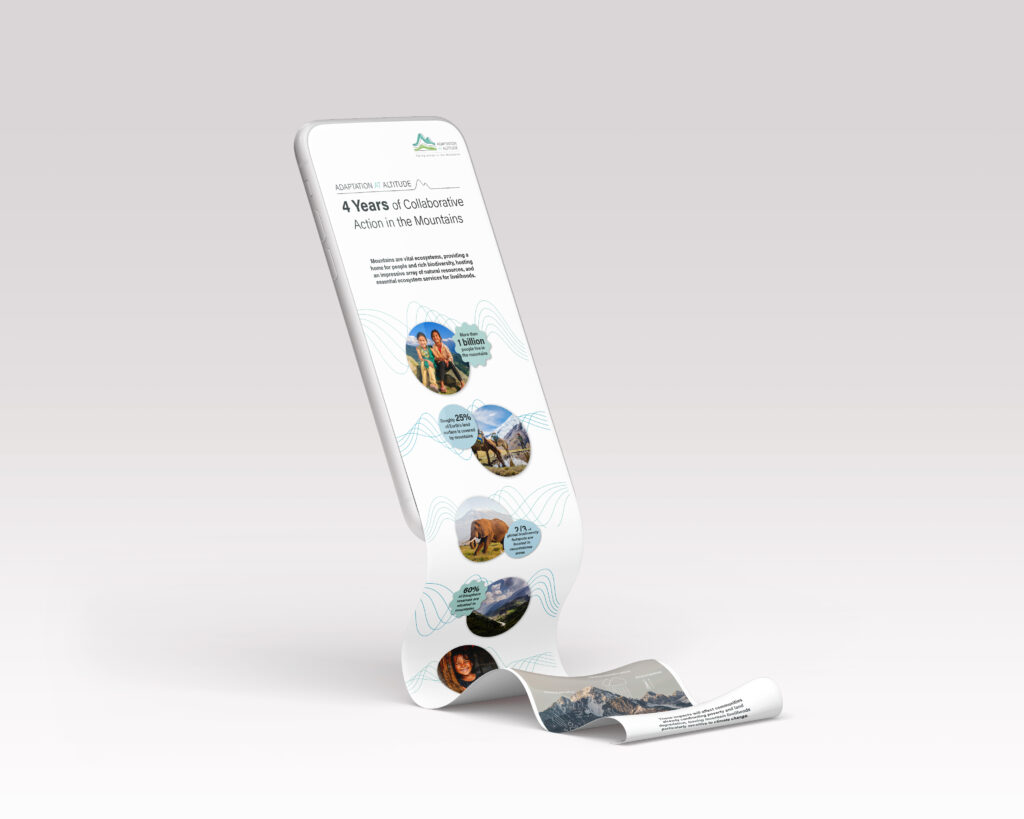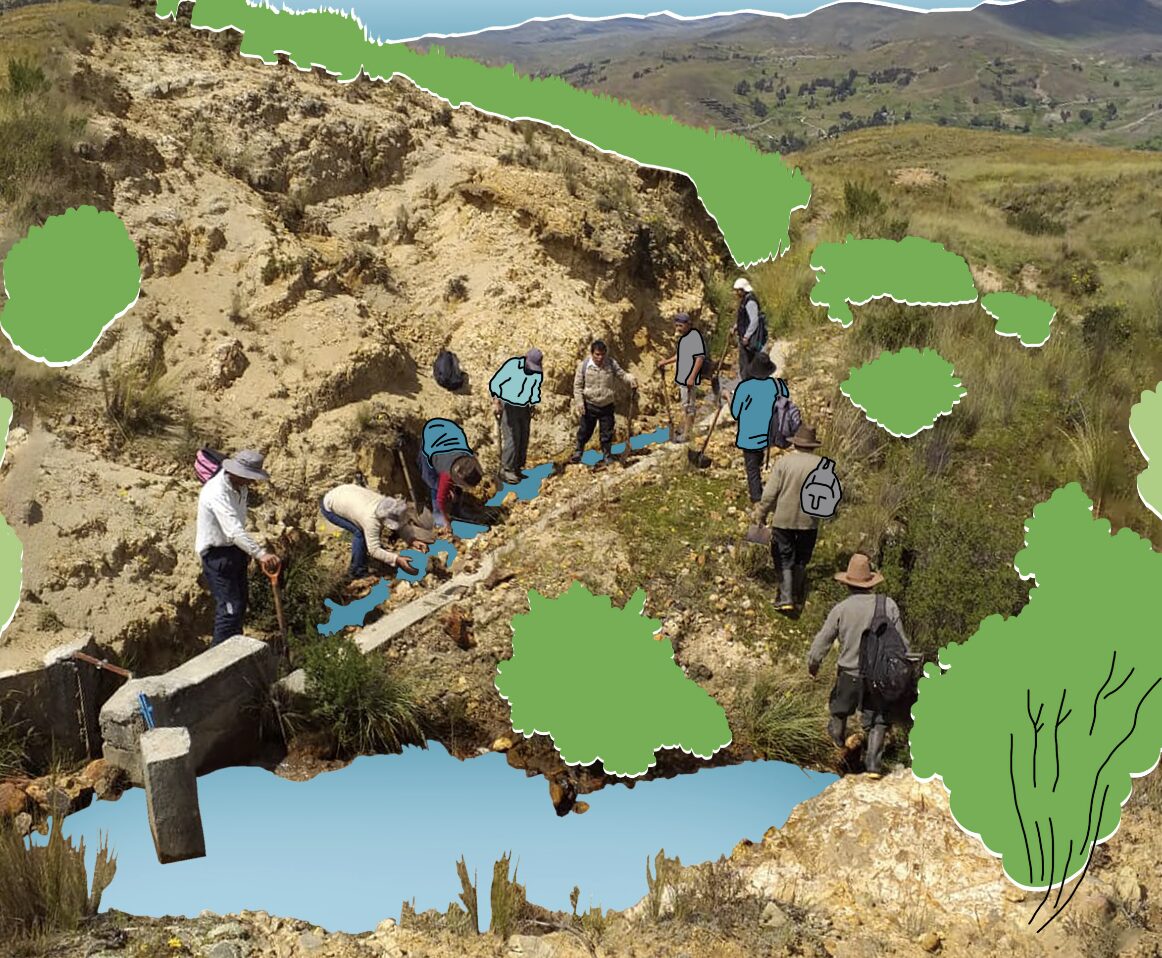Trends in climate adaptation solutions for mountain regions

Introduction
Climate change is having a significant impact on mountain ecosystems, which are home to a quarter of the world’s population and a source of freshwater for billions of people. Mountain communities are highly dependent on natural resources for their livelihoods, and changes in the mountain environment can have significant social, economic, and cultural impacts.
Evidence from mountain specific research confirms that climate adaptation is taking place in many mountain countries, often as a reaction to realised impacts, and sporadically as part of coordinated strategies and plans. The status quo of mountain adaptation is that of small adjustments to existing risk management strategies with limited scope and extent. Yet, as risks become ever more complex and pervasive, the need to move from small adjustments to substantial innovation and systemic changes, is becoming more pressing.
This study responds to the urgent need of shedding light on adaptation practice in mountains by compiling wide ranging facts and figures from a dedicated portal on adaptation solutions in mountain regions. It seeks to produce a comprehensive inventory of adaptation efforts taking place in mountains as part of realised and ongoing projects. This study addresses the critical need for documented adaptation progress in mountain regions by reviewing recently implemented or ongoing adaptation solutions collected from the Adaptation at Altitude Solutions Portal (A@A Solution Portal).
This article summarises the ‘Trends in climate adaptation solutions for mountain regions publication. The full text can be downloaded from the right-hand column. We highlight some of the publication’s key messages below, but please access the original text for more comprehensive detail, full references, or to quote text.
Methodology
Solutions were collected from the Adaptation at Altitude Solutions Portal, which was co-designed by scientists and practitioners in response to the increased needs of a more practice-oriented science of adaptation that takes into account local necessities and different knowledge systems. A schematic view on the methodological approach used in this study is given below in Fig.1.

There are two main steps identified:
- Survey design – The survey employed to populate the A@A solution portal was co-designed by the partner institutions of the programme and informed by a preparatory phase that included a user needs assessment, as well as a review of existing on-line climate adaptation platforms. In parallel, the review of on-line platforms providing climate adaptation solutions was also conducted. This review consisted of three main phases: screening, in-depth analysis of selected platforms, and gaps identification.
- Analytical framework of the survey – For the purpose of this study, we assessed the (1) general characteristics of the solutions, namely location, climate impact addressed, type of mountain ecosystem, sectors where the solution was implemented and type of solution, (2) their feasibility and effectiveness, and (3) their transformation potential.
Results
Using a data driven approach, the research explores the characteristics, feasibility, and transformative potential of these solutions. Findings reveal a predominant focus on addressing droughts and floods, aligning with the IPCC’s emphasis on water-related impacts in mountains. Notably, watershed management practices emerge as popular solutions, showcasing their capacity to address multiple concerns beyond climate impacts. Education and awareness, along with land use practices, dominate the types of solutions, reflecting their positive impact on project acceptability and low associated risk of maladaptation. Agricultural land and forests are the main ecosystems where solutions are reported, with an evident association with education and awareness and land use change solutions.
Furthermore, findings underscore the significance of co-developing and maintaining adaptation solution portals, illustrating how this approach enriches our understanding of adaptation progress in mountains. Moreover, this research contributes to broadening the scope of systematic adaptation assessments by providing a nuanced perspective that integrates local needs and diverse knowledge systems. In essence, this study makes a valuable contribution to the evolving landscape of adaptation research, emphasizing the importance of practical insights and collaborative efforts to address the complex challenges posed by climate-related impacts and corresponding adaptation efforts.

To read more about the results and discussion please see the full text that can be downloaded from the right-hand column
Conclusion
Far from being all encompassing, the A@A Solution Portal misses yet the showcasing of other important mountain regions, possibly because of a bias in the initial scope of the survey and solicitation efforts, which were mainly geared towards international development and cooperation. Fortunately, efforts are underway to have a more geographically balanced display of solutions that will enhance learning between mountain regions in the global south and north.
Another challenge of adaptation is the persistent lack of integration of concepts and terminology across different strains of literature, whether adaptation, vulnerability, or impact driven. This has been identified as a persistent barrier to adaptation assessment.
Reference
Muccione, V., Aguilera Rodriguez, J., Scolobig, A. et al. Trends in climate adaptation solutions for mountain regions. Mitig Adapt Strateg Glob Change 29, 74 (2024). https://doi.org/10.1007/s11027-024-10168-8






Comments
There is no content